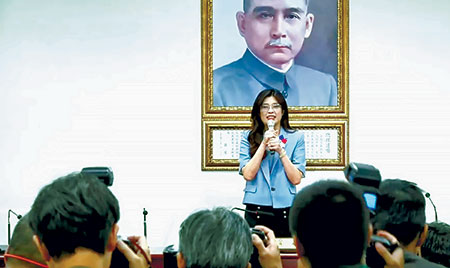
The global stage is increasingly defined by the intensifying rivalry between the United States and China, a dynamic that American entrepreneur Elon Musk recently likened to a new Cold War, warning of potential direct confrontation. At the heart of this geopolitical tension lies Taiwan, a self-governed island with democratic institutions, now navigating its complex relationship with Beijing amidst rising international scrutiny. A recent election on the island has brought a new figure to the forefront, Zheng Liwen, the newly elected leader of the Kuomintang (KMT), Taiwan’s main opposition party, who advocates for a peaceful resolution with Beijing, yet staunchly upholds Taiwan’s distinct democratic identity.
Zheng Liwen, a 55-year-old political veteran, previously served in Taiwan’s legislature, initially aligning with the Democratic Progressive Party (DPP), which Beijing views as separatist. Her transition to lead the KMT, a party with historical ties to mainland China but now a cornerstone of Taiwan’s democratic opposition, signals a potential shift in the approach to cross-strait relations. Taiwan, accustomed to strong female leadership, including former President Tsai Ing-wen of the DPP, now watches as Zheng attempts to chart a course for dialogue without capitulation.
The inherent dilemma for Taiwan is stark: Beijing considers the island its sovereign territory, reserving the right to use force if Taiwan declares independence. Countering this, the United States has historically provided Taiwan with defensive weaponry and passed legislation mandating the strengthening of the island’s defense capabilities, placing it squarely in a strategic bind between two global powers. This delicate balance is further complicated by the ruling DPP’s current strategy, which involves increasing military spending and acquiring advanced air defense and anti-ship missile systems with international assistance, aiming to deter any potential amphibious invasion from the mainland.
However, Beijing’s preferred path, as articulated by President Xi Jinping, is peaceful reunification under the “one country, two systems” framework, a concept that promises a high degree of autonomy. Xi’s congratulatory message to Zheng Liwen, extended as General Secretary of the Communist Party of China Central Committee, invited her to “strengthen the common political foundation between the two parties,” advocating for expanded exchanges and promoting the idea of reunification among the Taiwanese populace. Beijing views the KMT as a more amenable dialogue partner compared to the DPP, with whom communication has largely ceased.
Yet, the KMT’s interpretation of this “common foundation” is distinct from Beijing’s. In her reply to Xi Jinping, Zheng conspicuously avoided any mention of reunification, instead emphasizing the shared ethnicity of people on both sides of the Taiwan Strait—a subtle but significant distinction, signaling that shared heritage does not equate to shared sovereignty. Taiwanese citizens have witnessed the practical implications of “one country, two systems” in Hong Kong, where democratic freedoms and opposition movements have been significantly curtailed after its handover to China. This precedent understandably fosters deep skepticism in Taiwan regarding any arrangement that might compromise their democratic way of life.
The Kuomintang, which governed mainland China before retreating to Taiwan after its civil war defeat by the communists in the 1940s, carries a complex legacy. While figures like Chiang Kai-shek remain an important part of its history, Zheng Liwen and the modern KMT recognize that the Taiwanese electorate prioritizes democratic freedoms. Therefore, the KMT’s political platform, while advocating for peaceful engagement and dialogue with Beijing, unequivocally rejects any transfer of power to the Chinese Communist Party, underscoring its commitment to Taiwan’s democratic future and its right to self-determination, even as it seeks to de-escalate cross-strait tensions.
